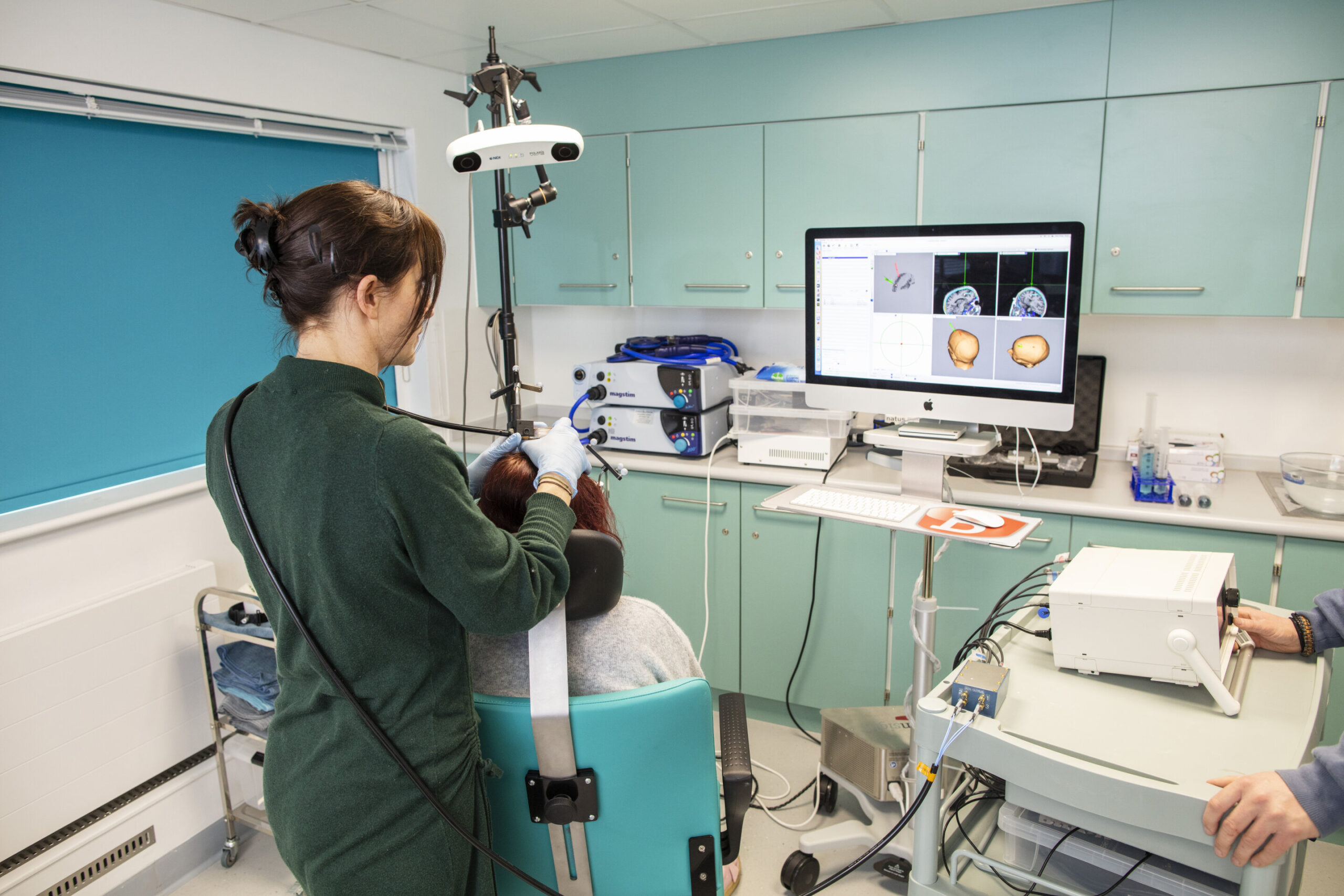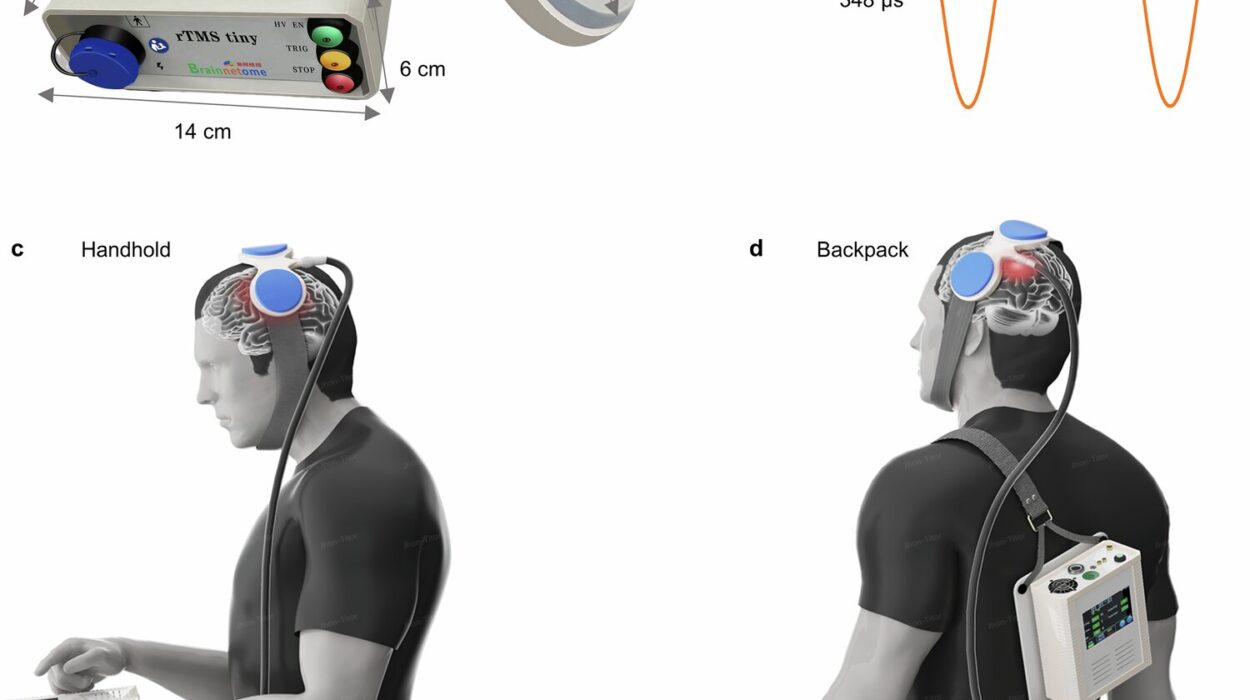Deep within the brain, nestled in a region known as the nucleus accumbens, lies a tiny yet mighty structure responsible for something deeply human: the motivation to seek rewards. It lights up when we experience pleasure, shapes our desires, and influences the choices we make. Now, scientists have unlocked a way to modulate this critical area—without surgery. A groundbreaking study from the University of Plymouth reveals how the application of transcranial ultrasound stimulation (TUS) can influence the brain’s reward system, offering hope for future treatments of neurological and psychiatric disorders.
For years, researchers have understood that the nucleus accumbens plays a pivotal role in how we learn from rewards. It’s the center of motivation, the place where dopamine signals merge to guide our actions. But until now, any attempt to intervene with this part of the brain required invasive procedures, often with risks and long recovery periods. However, this new research shows that TUS, a non-invasive ultrasound technique, can activate this region and shape how we learn and make decisions.
Unlocking the Brain’s Reward System
The experiment was straightforward in its setup but revolutionary in its implications. Researchers at the University of Plymouth, in collaboration with the University of Oxford and other institutions, used TUS to apply a gentle ultrasound to the nucleus accumbens of 26 healthy participants. The ultrasound lasted just over a minute, but its effects were profound.
Participants were asked to complete a series of tasks while their brain activity was carefully monitored. These tasks, designed to test their ability to learn and make decisions based on rewards, provided a window into the brain’s workings. The results showed that the TUS intervention didn’t just nudge behavior; it accelerated learning. Participants who received TUS stimulation were more likely to repeat choices that had previously paid off, learning faster from positive outcomes, and even making decisions more quickly than before.
This kind of influence on learning and decision-making wasn’t something researchers had previously been able to achieve without surgical intervention. Prior studies involving deep brain stimulation (DBS) used electrodes directly implanted into the nucleus accumbens. DBS has long been a tool in treating severe psychiatric and neurological disorders, including addiction and depression, but it comes with significant risks. The fact that TUS could produce similar changes in behavior—without the need for surgery—was nothing short of a revelation.
The Role of the Nucleus Accumbens in Our Choices
Professor Elsa Fouragnan, the lead researcher and Director of the Center for Therapeutic Ultrasound at the University of Plymouth, explains the significance of this discovery: “For decades, the nucleus accumbens has sat at the center of theories of motivation and reinforcement learning. It is the hub where dopamine signals and limbic inputs converge to shape how strongly rewards pull our choices.”
In their study, Fouragnan and her team discovered a clear connection between impulsivity—a specific cognitive trait—and the nucleus accumbens. This was an area of the brain that, until now, could not be directly influenced without surgery. By using TUS, however, the team was able to alter how participants responded to rewards and how quickly they learned to make better decisions based on them.
In the world of brain research, these findings mark a pivotal moment. No longer are scientists confined to the operating room, where electrodes must be implanted to alter brain activity. With TUS, they now have a safe, non-invasive tool that can influence deep brain structures and offer personalized treatments for people suffering from conditions such as addiction, eating disorders, and other psychiatric illnesses.
Non-Invasive Treatment for Reward-Seeking Behavior
The potential of TUS goes beyond just altering behavior in healthy participants. The research also draws comparisons to patients undergoing DBS treatment, especially those being treated for severe disorders like anorexia nervosa. In these cases, deep brain stimulation has been used to normalize the reward-seeking behavior that is often disrupted by psychiatric conditions.
What makes the TUS technique stand out, however, is its “excitatory” effect on the nucleus accumbens, as opposed to the “normalizing” influence of DBS. While DBS can help regulate behaviors in certain cases, TUS ramps up the brain’s reward sensitivity. This means that TUS could have a different kind of therapeutic potential, especially in people who need to be more motivated to seek out positive behaviors or overcome inertia, such as those struggling with depression or addiction.
The team’s findings suggest that TUS could help recalibrate reward-seeking behavior in a way that restores mental balance, offering hope for those who find themselves trapped in cycles of negative reinforcement, like those battling addiction. This non-invasive approach could be the key to offering relief without the need for invasive surgery, offering a safer, quicker path to recovery.
A New Era in Neurotechnology
Professor Fouragnan calls the study “the most significant” she has ever led. “We uncovered a clear link between a specific cognitive process and a deep-brain structure that, until now, was beyond reach without surgery,” she says. “It marks a turning point for neurotechnology, showing that a non-invasive ultrasound approach can influence behavior and may one day help restore mental balance.”
The research could have far-reaching implications for the treatment of psychiatric disorders. Conditions such as addiction, anxiety, depression, and eating disorders often involve imbalances in the brain’s reward system, leading individuals to engage in destructive patterns of behavior. TUS offers a new avenue for addressing these issues without the need for invasive procedures or long recovery times.
Moreover, this study could also pave the way for future clinical trials, where personalized treatments might be developed to target specific neural circuits in individuals suffering from a range of disorders. The idea that we can now influence the brain’s reward system non-invasively opens up an exciting frontier for mental health treatments, potentially providing faster, safer, and more effective alternatives to current therapies.
Why This Research Matters
The results of this study matter because they show us that the brain is not as rigid as once thought. The nucleus accumbens, a key player in how we learn from rewards and make choices, can now be modulated in a targeted, non-invasive way. This breakthrough has the potential to revolutionize the treatment of disorders that disrupt the brain’s reward system, such as addiction, eating disorders, and mood disorders like depression.
TUS offers a unique combination of safety, precision, and effectiveness. It could change how we approach brain therapy, offering people a new chance at regaining control over their mental and emotional health. As research continues, it may lead to more personalized, accessible treatments for individuals who need them most, marking a significant step forward in neurotechnology and our understanding of the human brain.
This study doesn’t just represent a scientific breakthrough; it signals a future where we may be able to heal the mind by reaching deep into the brain, without ever needing to cut or invade it. The possibilities are just beginning to unfold, and they are nothing short of transformative.
More information: Non-invasive ultrasonic neuromodulation of the human nucleus accumbens impacts reward sensitivity, Nature Communications (2025). DOI: 10.1038/s41467-025-65080-9






